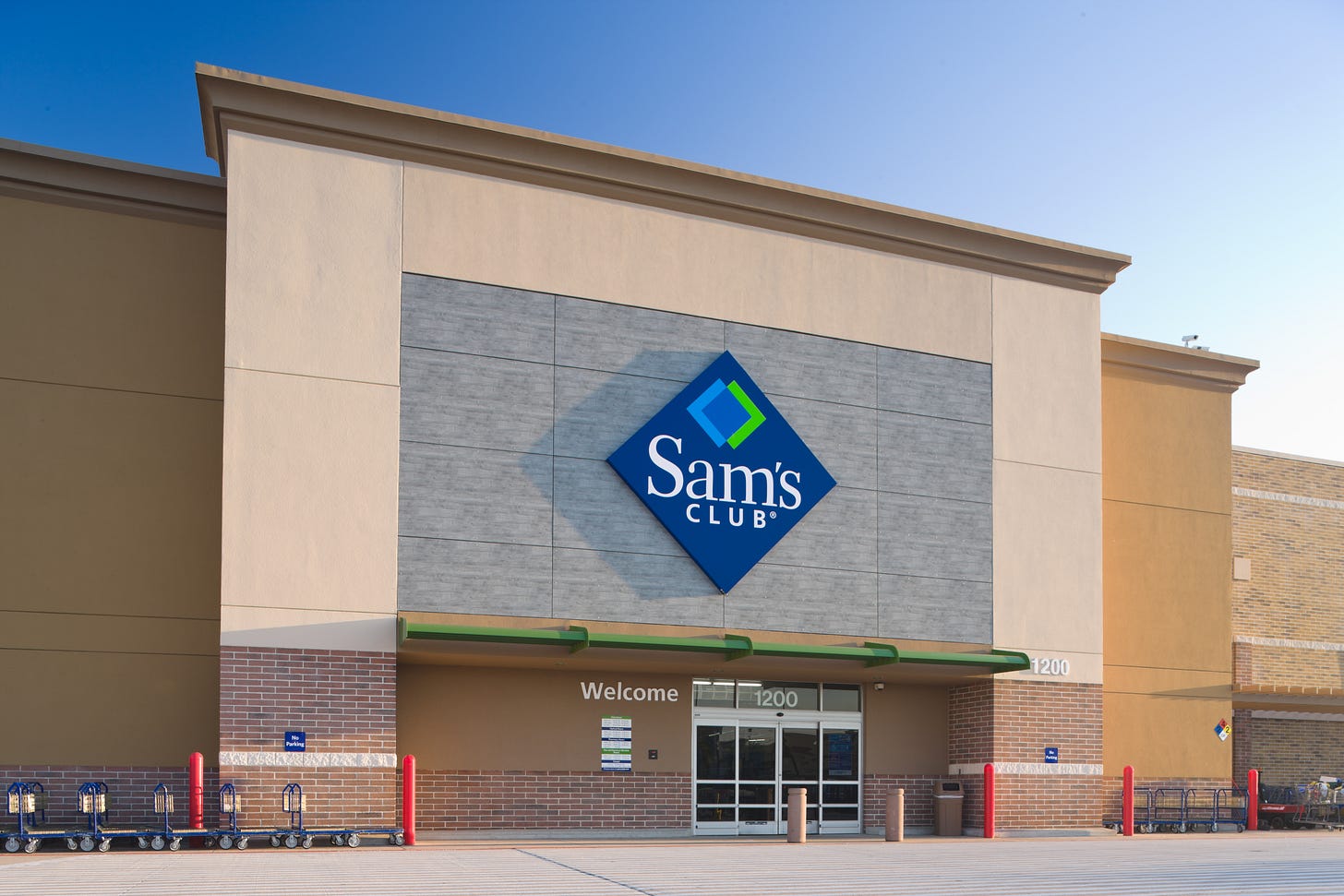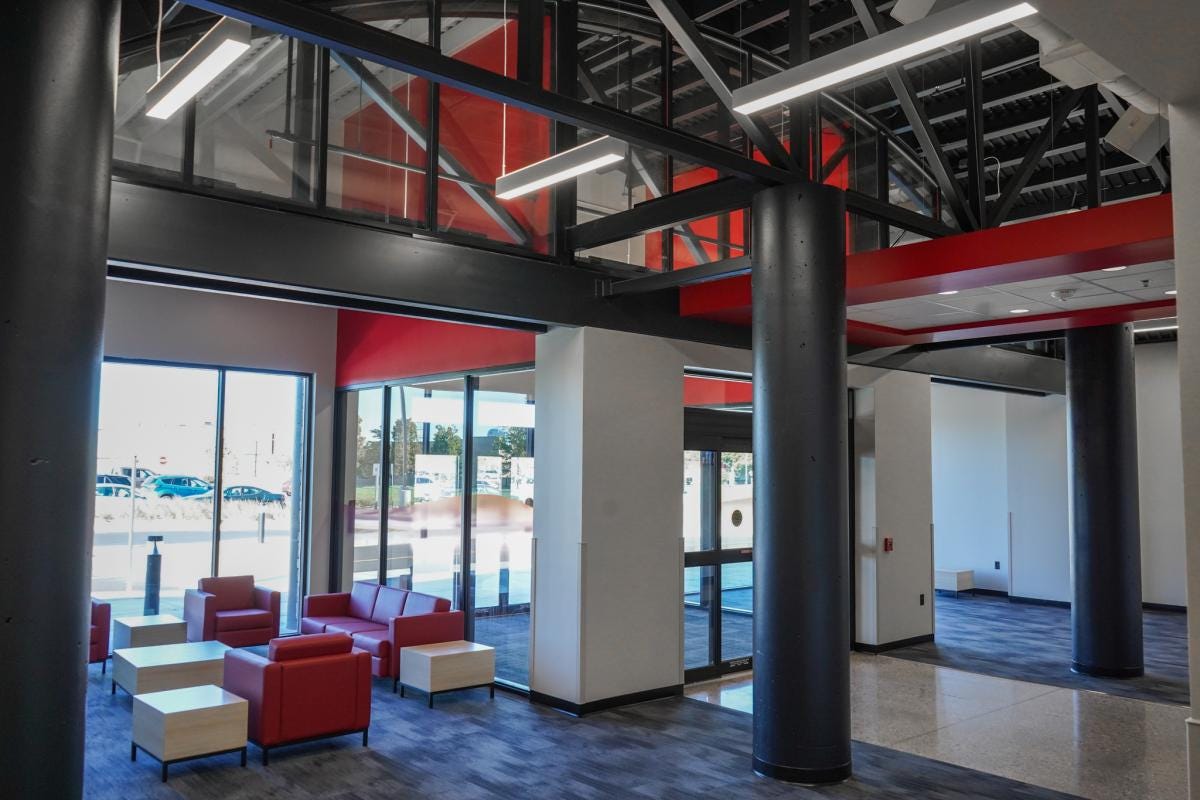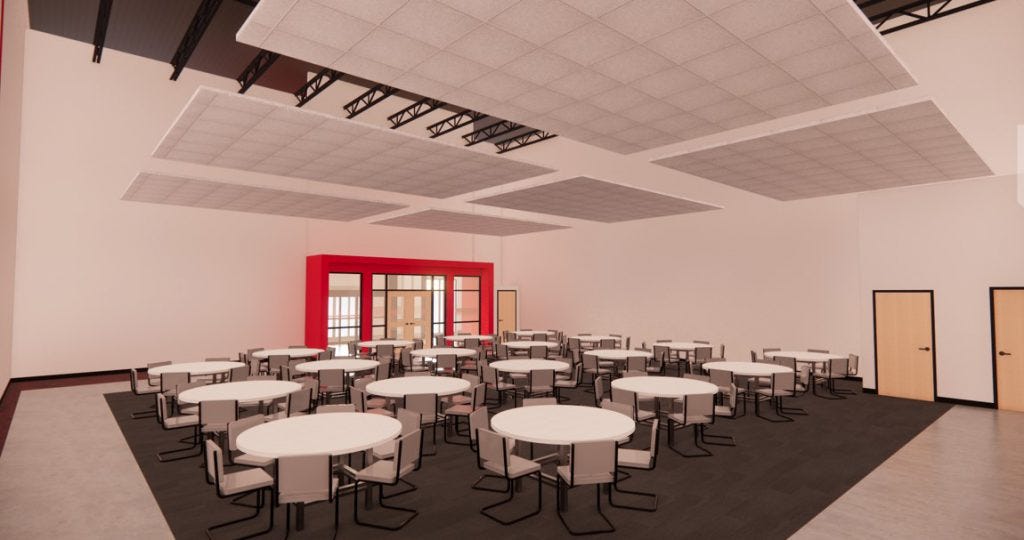The Former Sam's Club That Is Now A Workplace For The Blind
Beyond Vision's VisABILITY Center in Wisconsin is not only a specially designed workplace for the blind but also an adaptive reuse of a former Sam's Club
This month marks two years since the opening of the VisABILITY Center in West Allis, Wisconsin.
Created by Beyond Vision — a nonprofit career agency for the blind and visually impaired — the ~130,000 square foot VisABILITY Center is a specially designed, mulit-dimensional workplace for the blind.
It includes a manufacturing area, a distribution center, offices and community space where blind and low vision employees complete machining, assembly, packaging, and customer support work.
The VisABILITY Center building was outfitted with textured flooring which aids the navigation of individuals that walk with a cane, ambient lighting to minimize glare, and acoustic insulation to dampen stray sounds and ambient noise, as sound helps blind and low vision individuals orient themselves in space.
One more interesting thing about the VisABILITY Center?
It is an adaptive reuse of a former Sam’s Club.
Beyond Vision was established over 60 years ago with the mission to improve lives for people with disabilities by providing job training and sustainable employment opportunities to the visually impaired.
The agency has contracts with customers such as Harley Davidson, Caterpillar and Briggs & Stratton to provide machining, assembly, packaging, warehousing and customer support services — all produced and delivered by visually impaired people at its specially-outfitted properties.
The VisABILITY Center in West Allis takes Beyond Vision's mission to another level.
It is centrally located, proximate to mass transit, and includes modern design features and amenities that are not available at Beyond Vision's other properties.
Additionally, the size of the VisABILITY Center has enabled Beyond Vision to more than triple its workforce — which is critically important given that ~70% of adults coping with low or changing vision are unemployed.
Beyond Vision tasked Bray Architects to formulate a plan to transform the Big Box retail space into an accessible, multi-purpose facility focused on the key principles of texture, lighting and sound that help blind and low vision people orient themselves.
Additionally, its interiors team utilized goggles that simulated vision impairment to better understand how colors and materials might be perceived by low vision employees.
Bray even enlisted blind architect Chris Downey to consult in his specialty practice area: making conventional spaces accessible to the blind.
Bray and team incorporated the principles of texture, lighting and sound into the transformation of the Sam’s Club. Specific examples includes:
Conversion of the tire sales area into a building maintenance shop with high contrast paint and material color schemes that help low vision individuals distinguish between horizontal and vertical surfaces.
Repurpose of the main shopping floor as private office and meeting rooms. A strip of carpet was added along the perimeter where the floor meets the wall so individuals that use a cane can hear and feel that the wall is nearby.
Utilization of the grocery loading area as an employee entrance. It is marked by soffit canopies with acoustic ceiling tiles that help users easily identify entry and exit areas.
Creation of a multi-purpose employee lounge, fitness area and resource room for individuals with guide dogs in the center portion of the building.
The team also transformed a portion of the site’s expansive parking lot into green space and walking areas that are open to the public.
The VisABILITY Center is certainly a unique repurpose and creative adaptive reuse of a Big Box retail building.
But Beyond Vision hopes that it also serves as a national model of sustainable employment for the blind and visually impaired.







